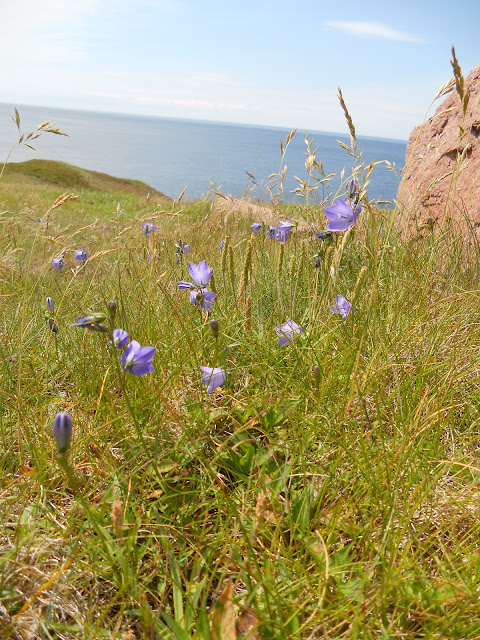In May, I mentioned a new project at Gordon and Mary Hayward's garden, I am calling it the New Spring Garden as it is a re-design of the old Spring Garden. This spot used to be full of plum trees and spring flowering bulbs and it was beautiful, but difficult to maintain. Gordon and Mary called for a re-do and the entire garden was dug over. All the dying and suckering plums were removed and they build an axial path shown here, dividing the garden into four quadrants. This spring they ordered a slew of new perennials to create a meadow-inspired garden in the spirit of Piet Oudolf. When I returned from Great Dixter I was brimming over with new plant ideas and annual planting techniques and so Gordon and Mary charged me with the task of weaving annuals through their perennial plantings. We moved in some teasel that Gordon and Mary overwintered in their vegetable garden and this photo shows how well they have grown. This post is dedicated to what has happened in just two short months. I think we are all very excited about this garden and it does feel different from other areas of the garden- it is untamed and wild and packed to the brim with plants. See what you think.
(The above photo was taken by Gordon Hayward)
(The above photo was taken by Gordon Hayward)
A quick "before shot" just after the new perennials were planted in mid-May
The annuals were all planted by late May and the entire garden has filled in to look like this by mid-July.
A slice of happy plants. The magenta pink is Oregano is 'Rosenkuppel,' with an Eryngium from the vegetable garden, and the small flurry of seeds are from the flower heads of the grass Sporobolus heterolepsis (see upper left). The annuals include white stems of Gaura in the front, tall feathery Ammi visnaga 'Green Mist, with bright spots of red from Emilia javanica, and the tall bright pink of Persicaria orientalis brought home as seeds from Great Dixter.
The fine mist of Sporobolus with the Oregano, plus Persicaria amplexicaulis 'Firetail,' with a mighty teasel lingering in the back ground.
A lively corner with that Oregano, a Coreopsis Mary started from seed a few years back, plus Gaura and nasturtium.
A snaking garnet sea of Sanguisorba officinalis 'Tanna' with Ammi majus and Verbena bonariensis. The Ammi and Verbena was a combination directly quoted from pictures I saw of Great Dixter last year. The bright red spots come from that great Emilia plant.
More sprays of Sporobolus with the Verbena, Ammi and Persicaria.
Even though it is a very new garden, there are still many of the old self-seeders representing a piece of the garden's former life. Here are the native tiger lilies and some of Mary's poppies.
A quieter shot of this pot display I helped assemble earlier this year.
(Photo taken by Gordon Hayward)



























